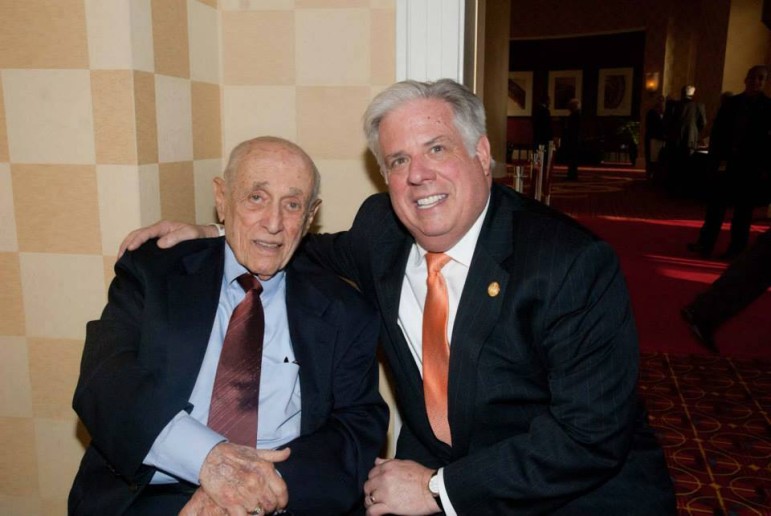
Former Gov. Marvin Mandel at his 95th birthday celebration in Mary with Gov. Larry Hogan. Photo by Governor’s Office
By Len Lazarick
Len@MarylandReporter.com
Former Gov. Marvin Mandel died Sunday, ending a remarkable life that made him one of the most influential Maryland governors of the past century and one of the most colorful, with personal drama providing flourishes to his large public accomplishments.
If you live long enough in politics, all may not be forgiven, but most is forgotten, and if you’re lucky, only the good stuff is remembered, MarylandReporter.com wrote in May.
That’s certainly true of Mandel, who turned 95 in April and was feted at a birthday celebration that was an old-timers reunion for a man who left office 36 years ago. It’s nice to be able to hear your eulogies before you pass away.
A machine pol, Jewish kid from East Baltimore
A product of Baltimore Democratic machine politics, Mandel stayed relatively conservative as the Democratic Party has moved to the left.
He quietly supported both Hogan and former Republican Gov. Bob Ehrlich.
Mandel became Maryland’s chief executive when the last GOP governor before Ehrlich, Gov. Spiro “Ted” Agnew, was elected vice president with President Richard Nixon. Back then, the legislature chose the speaker of the House of Delegates, Mandel, since there was no lieutenant governor.
“I’ll Never Forget It” is what Mandel called his memoir published in 2010 when he turned 90 – a title that could have been applied to a thousand autobiographies. It might better have been called “The Accidental Governor.”
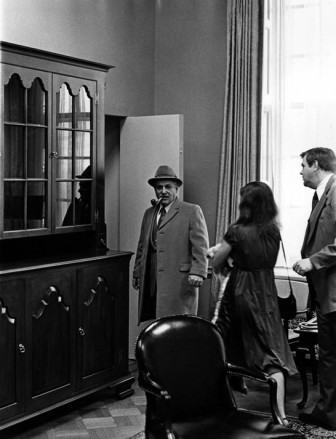
Gov. Marvin Mandel leaves office January 1979 by the backdoor of the governor’s office. Photo by Tom Darden
Based on a series of interviews conducted by Christopher Summers of the Maryland Public Policy Institute over the years, the book is “written” in the colloquial style of a plain-spoken man, a Jewish kid from East Baltimore. If you take him at his word in the book, Mandel never had ambitions to be a member of the legislature, chairman of the House Ways & Means Committee, speaker of the House of Delegates (accidentally again), and then the first Jewish governor of Maryland when the first Greek governor got to be vice-president.
10 years as governor, minus 19 months
Mandel had almost 10 years as governor, though 19 months of that was spent in a federal prison camp in Florida, on a mail fraud conviction that was later overturned on appeal.
Mandel’s legal problems left Lt. Gov. Blair Lee III as acting governor. Before that there was a marital drama that had him living on the governor’s yacht while his first wife refused to leave Government House. She had found out about the affair with the woman who would be become his second first lady.
Mandel has been called “the architect of modern Maryland.” He took hundreds of disparate state agencies, and put them together under a modern cabinet system. Maryland became the first state to have a transportation department overseeing roads, mass transit, port and airports that he purchased for the state to run.
Over several years, Mandel created the current structure of the Maryland judiciary, including the district courts and judicial nominating commissions to emphasize professional qualifications over political patronage.
He instituted state funding for school construction as Maryland’s suburbs grew.
Mandel is also remembered as one of the greatest friends of the black community, and appointed many of the first African American judges to serve in Prince George’s and other counties.
U.S. House Minority Leader Steny Hoyer was a young state senator who voted against Mandel’s election but later become Senate president with his help. He called Mandel, “the best governor I’ve served with for almost half a century,” praising “the generosity of his spirit.”
Being governor harder today
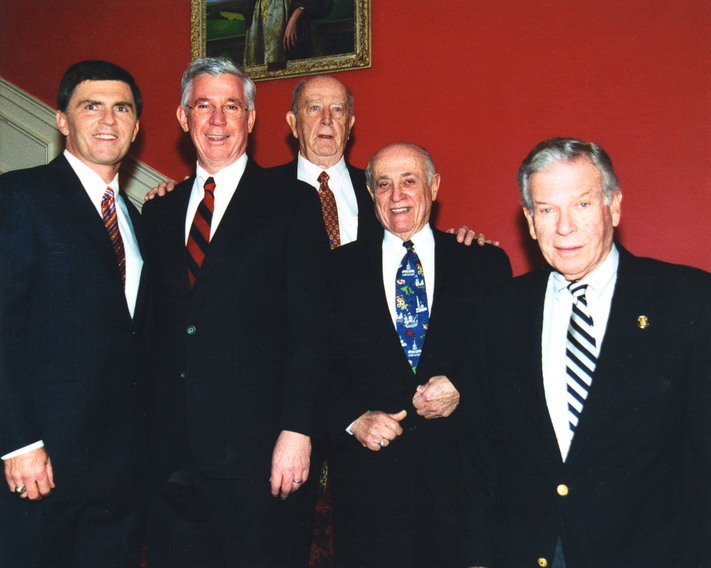
On Gov. Bob Ehrlich’s inauguration day in Janaury 2003, the five living governors at the time posed on the staircase of Government House. From left, Ehrlich, Parris Glendening, William Donal Schaefer, Marvin Mandel, and Harry Hughes. Photo by Tom Darden, who served as an official photographer for all of them.
Serving as governor “is far more difficult today than it was 20 years ago,” Mandel told MarylandReporter.com in an interview five years ago. “I think the legislature and the governor have done a pretty good job at keeping the state functioning, But you can’t keep raising taxes. You just can’t keep doing it.”
“We’ve reached a point where we have to reduce the size of government,” Mandel said. “I just think government is getting too big. I don’t think you should spend money you don’t have.”
When he entered the legislature in 1952, Mandel said, the budget was $250 million and today it is $32 billion. “Nobody knew what a billion dollars was,” he said.
Mandel recalled that he didn’t raise “general” taxes during his tenure, but according to historian George Callcott, the budget under Mandel rose 180% – going up double-digits all but one year.
A MarylandReporter.com analysis five years ago found that Mandel had some of the biggest spending increases of the last six governors.
At the May birthday bash, M.C. Tim Maloney, an influential attorney, said the famous epitaph for renowned English architect Christopher Wren found in the crypt of London’s St. Paul Cathedral could also apply to Mandel’s tenure as governor.
“If you seek his monument, just look around you.”
Still a visible presence at the State House
Even at the State House, just look around you. Mandel is still a visible presence on all three floors.
Besides his portraits in the Governor’s Reception Room (right) and in the House of Delegates chamber where he served as speaker (at top of page), in the large press room known as the Pit, there is heavy 3 foot by 5 foot black-and-white poster from his days as governor that was preserved by reporters when the State House was renovated in 2008.
It was re-hung in January 2009 with a brief ceremony attended by Mandel who signed the battered poster next to some small graffiti. Just his name, the date and a brief thank you. It still hangs there today.

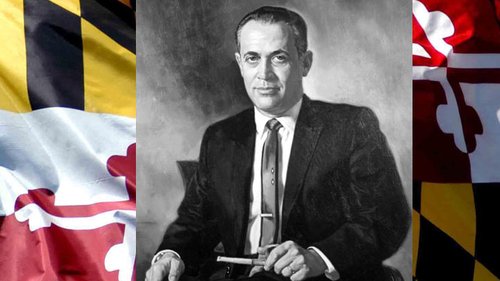
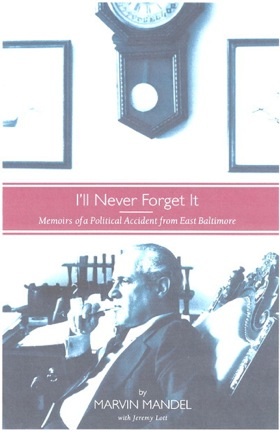

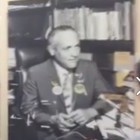



#RIPMarvin